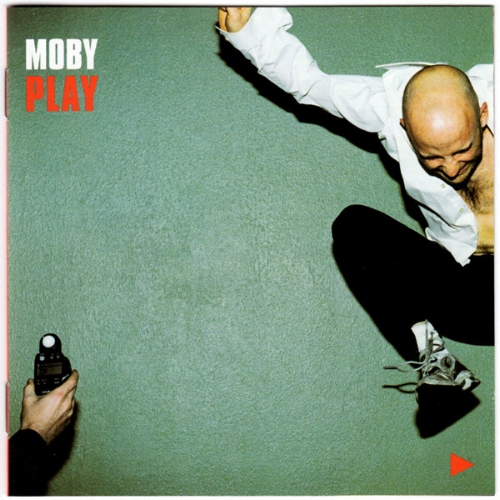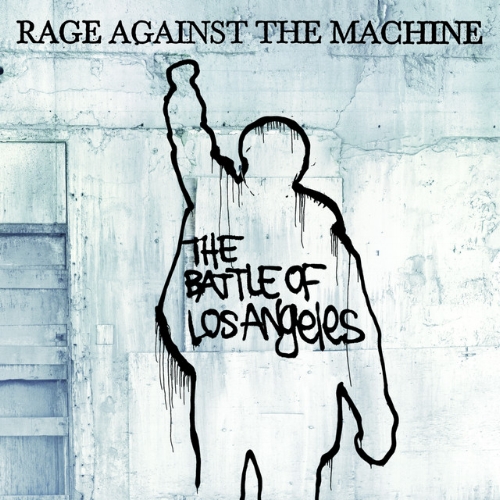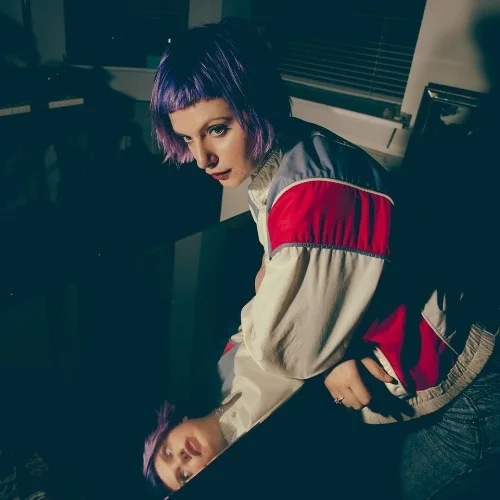FEATURE:
Season’s Bleatings
IN THIS PHOTO: Sir Elton John stars in the latest Christmas advert from John Lewis/PHOTO CREDIT: Getty Images/John Lewis
Will Advertisers Ever Strike the Right Musical Tone for Christmas?
__________
OVER the next couple of weeks…
PHOTO CREDIT: @jasmint/Unsplash
we will see more supermarkets and retailers unveil this year’s Christmas adverts. Invariably, these adverts will be accompanied by pieces of music and it got me to wondering about tone and popularity. In visual terms, we have seen some rather memorable examples through the years. Whether they are going for something sappy or emotionally vulnerable; playing or cheesy or going for cute – the more exclamations of “Awww!” and “Ooohhh!” we can draw then the better! Usually, we will get a family scene and, animated or live, a child bewildered by the joy of Christmas or some cute animal leading the way. I am not usually emotional when seeing the adverts – as they are not real and are designed to hock the products of a huge and rich company – but I can understand why some people might feel a bit teary with some of them. I have no objection to the nature of the adverts and the fact they are designed to make money and play on our emotions but, when it comes to the music side of things, has anyone ever got it right?! I am one of these people who wonders why the ‘classic’ Christmas tunes/carols cannot be used for adverts? I realise these companies want to blend the modern with classic so they tend to have something quite classical and comfortable regarding the themes/scenes of the advert and then bring in a modern reworking of an older song. There might be a commercial or emotional reason why we see, every year, the same sort of singers featured and the type of songs used.
IN THIS PHOTO: Amelia Warner (Slow Moving Millie)/PHOTO CREDIT: Getty Images
Slow Moving Millie covered The Smiths’ Please, Please, Please Let Me Get What I Want for John Lewis in 2011 and, whilst permission was given to use the song, the results were sadly familiar. It seems there is a particular tone and dynamic for every seasonal campaign. In 2015 – a few years after the aforementioned John Lewis campaign – another female singer, Aurora, covered Half the World Away (Oasis) for their Christmas pitch (see below). Whilst each advert had varied success – the latter was a more controversial and divisive one with an elderly man on the moon; the former more traditional and less ambitious – they were very similar in terms of songs. Both, strangely, used songs by Manchester bands; both tracks (the originals) are quite emotional but were transformed in the hands of the new vocalists. Each song title suggested family, unity and a need for togetherness; a yearning and hopefulness coming through but, sadly, each rendition bleached the original song and delivered something rather lumpen into the stocking. I realise it is lazy to rehash Christmas carols or can be tricky getting rights to play an existing song but the dynamic of employing a breathy/sweet female singer and having various shades of beige presented each year does take the edge off of things.
I do wonder whether the way we react to Christmas adverts is too strongly influenced by the songs. I realise the words and deliveries are meant to add to the advert and convey a clear message but so many of the songs are listless and mediocre. There are articles like this that rank the Christmas ads and collate the best but, as we have become more advanced and given more options; the nature of adverts has become narrow and singular. Older adverts have switched between live action stories and concentrated on different aspects of Christmas – heightening the appeal of the food or focusing on charity and togetherness. The last few years, more and more, are relying on schmaltzy and saccharine concepts, albeit some are done with ingenuity and a fresh angle. Whether there is an animation or something visually arresting; there is a certain amount of sappiness and caramel that has replaced invention and variation. I guess, when advertisers limit their palette and spectrum, the music has to match. The choice of singers is bafflingly limited. Every year, it is another female singer who seems to be cut from the same cloth as every other Christmas advert-scoring performer. The choice of cover versions is odd and, like I said, the cover versions are rather limp and pointless. I do wonder whether advertisers need to think about the music/singer choices and understand the music that accompanies their visuals can be as compelling as anything – often eliciting more emotion and potency than the film itself.
PHOTO CREDIT: @mtaneva2001/Unsplash
Apart from the ‘banned’ Iceland T.V. advert – one that has an ecological message that rallies against our overuse of palm oil and how it is affecting the environment. The advert was banned on the grounds it is too political and controversial. People are campaigning for the ban to be lifted and it is one of the rare occasions where an advert’s message has outshone anything else (in a negative or divisive manner). Look around at the past six or seven years and it has been the same slew of rather anodyne and un-festive musical offerings. Maybe this year will see a sea change but it seems Sainsbury’s’ latest advertising commercial, not only goes down Sap Lane, but treads very close to a John Lewis campaign. The setting and visuals are reliably nauseating and family/child-orientated – advertisers assume Christmas is reserved for children and completely lost on adults – but the music choice, again, is stilted and odd. You cannot accuse the child who sings the New Radicals’ You Get What You Give of being the same as Slow Moving Millie and the usual parade of rather vanilla-scented singers but there is something completely offputting and pointless about the ‘musical aspect’. Like many other adverts that use popular songs; someone has taken the lyrics/title and thought to themselves it would be perfect for their campaign. Not only does the 1990s classic have nothing to do with Christmas but it means, again, a great song has been tortured and strangled.
Luckily, retailers like Tesco and Marks and Spencer have avoided major music faux pas. The former barely has any music at all whilst the latter, featuring Tom Jones, has at least avoided the usual traps that retailers get themselves into. I think music can heighten an advert, if done right, and help compliment the visuals. That is what the aim is, surely?! Advertisers need to think about striking the right tone without offending or being boring. I wonder why the classic Christmas songs are being avoided and why Carols cannot be reimagined. If people do insist on picking popular tracks and getting someone modern to sing them, there needs to be a rethink and rebranding. I would like to see more soulful voices chosen and songs that have a more ‘Christmas feel’. There seems to be this divison between companies like Sainsbury’s tackling a well-known song or others, like Lidl having a more traditional background. In either case, I feel something is missing and a great imagination needs to go into the musical choice. This brings me to the latest Christmas advert that, whilst bolder regarding its music and focus; it has drawn some sighs and suggestions from people. John Lewis, realising the machine-processed identikit singers wrecking some northern classic is not the right approach.
Whilst they have cranked up the saccharine to the maximum – I do have a heart somewhere! – the musical decision, again, has drawn some provocation. The Guardian explains why they some doubts regarding Sir Elton John’s appearance in the latest advert:
“The 2018 John Lewis ad is heartwarming. Elton John sits alone at his piano, playing Your Song while moments of his life flash before his eyes. He sings in a stadium, he sings in the studio, he sings in a pub, he sings at a school concert. It’s a very sweet advert with a very simple message: somebody better call Elton John an ambulance right away, because this is exactly the sort of thing that happens right before you die.
In fact, the advert is probably too heartwarming. Just a few weeks ago, the Queen biopic Bohemian Rhapsody was heavily criticised for its toothless portrayal of Freddie Mercury’s worst excesses, and the same could be said for the John Lewis advert. Elton John isn’t a great pop star because he sings songs about little dancers, crocodiles that rock and being able to stand up. No, Elton John is a great pop star because he is knotty and complicated and, well, a bit of a dick sometimes”.
Musical memories start to flood by and, just when you think the sugar-sweet visuals cannot get any more tear-jerking; there is a bit of humour and surprise thrown in:
“The music now reaches a crescendo, and then …
It’s Christmas morning again. Elton finishes playing Your Song and, with a nostalgic tear in his eye, gently shuts the lid. But then he notices the cameraman in his peripheral vision and loses his temper, screaming profanities and flinging vases until the cameraman is forced to escape and flee for his life. Finally, the new slogan appears: “John Lewis. If we can deal with him, we can deal with you”.
Oh, wait! That was The Guardian’s finale and, to be fair, one that would have made for a better ending – not very Christmas-like is it?! I like the angle of a popular musicians recalling their memories and, by putting music right in the spotlight, a big risk has been taken. It is good to see a more emotional side to Elton John – rather than him having a diva strop – but it seems to be more about him than Christmas; the budget must have been huge and many have criticised the cost of the advert at a time when John Lewis is tightening its belt. Is it possible to get the music just right and keep the cost pretty low? Hiring a lesser-known artist to perform the song is a way to do that but it does not have the gravitas of a truly big name. If you do get these titans in the frame then you need to make sure what they are singing or what they are representing gets the balance right. Maybe it is impossible to strike that right chord (get it?!) and please everyone. Many people argue Christmas it too materialistic so one cannot really have an argument against the music of a Christmas advert – when we should be focusing on the message and purpose. The thing is, the Christmas adverts are representing organisations who feed (literally) this commercialism so, as such, if we are to buy into their campaigns then they need to consider and perfect every point.
PHOTO CREDIT: @sholt680/Unsplash
The latest crop of Christmas adverts ranges from ‘political’ and unique (Iceland) to the usual fare (Sainsbury’s) to something a little less music-focused (Tesco). John Lewis, as you’d expect, have drawn a lot of focus and, again, the high-cost retailer has incurred losses in the Christmas advert race. I wonder why it is so difficult for advertisers and these big stores to get the tone right and understand how impactful a great musical backing can be. We sing Christmas carols because they are timeless and pure; we love popular songs because they resonate and have that quality. It seems, in the hands of the advert makers, there is less beautiful chemistry than a messy sort of sludge. I am never going to be swayed to a supermarket/shop based on their Christmas campaign but I am likely to be a bit put off by a particularly sickly/atonal advert. Maybe I will come around to the Elton John-featuring John Lewis campaign or be less inclined to scowl when seeing the Sainsbury’s advert come on. Maybe the solution is a lot simpler: mute the sound and, whilst watching the advert unfolds, play...
PHOTO CREDIT: @mariahashby/Unsplash
MY own musical accompaniment!





























































































































































































































